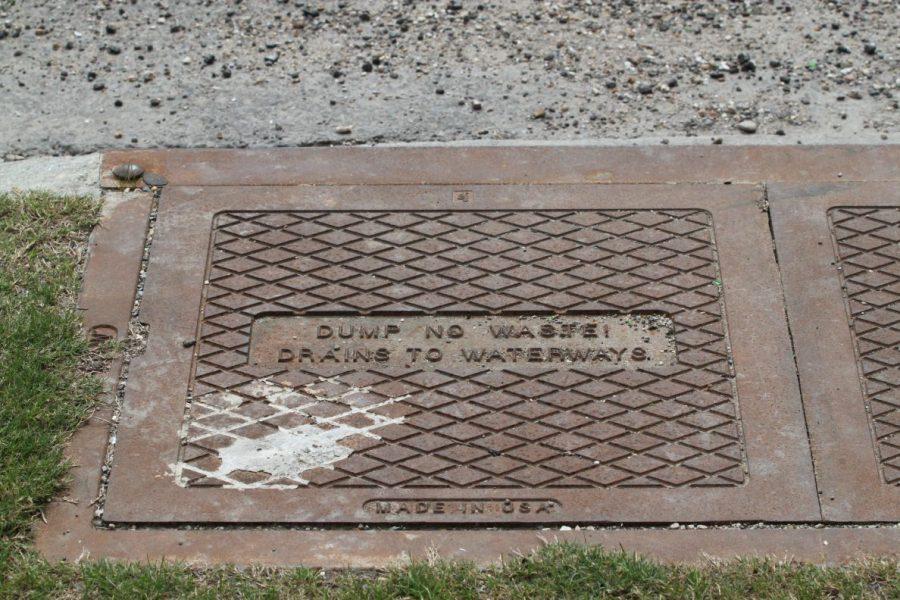Tulane geochemists find arsenic in Louisiana drinking water
Dumping certain chemicals and substances into drains that lead to wells can contaminate groundwater supplies. Tulane Geochemists found that rural Louisiana towns are suffering from this contamination, and arsenic has been found in private wells.
March 16, 2016
Napoleonville, Louisiana, with its population of 660, is surrounded by fields of sugar cane and grazing cows. But below these fields in shallow aquifers, or groundwater reservoirs, arsenic lingers.
Soil probe in tow, Tulane geochemistry professor Karen Johannesson and her team of researchers went to the Napoleonville area in September 2013 to visit wells and collect sediment cores and groundwater samples. Chemical analysis of the samples helped them determine the processes resulting in the groundwater’s high levels of arsenic. Their work has just been published in this month’s issue of The Journal of Hydrology.
“Our research indicates shallow groundwaters in southern Louisiana are at high risk of arsenic contamination,” environmental chemist Ninfang Yang said. Yang is the leading author of the study and completed her doctoral studies at Tulane in December 2015.
Arsenic is a naturally occurring trace element with a history of contaminating drinking water and devastating communities. High arsenic levels may be an unrecognized risk for people who depend on private wells for drinking water, the scientists concluded.
“Most people don’t drink groundwater,” Johannesson said. “[P]eople in New Orleans drink river water.” But in rural areas like Napoleonville, it’s not uncommon for homeowners to use private wells.
“Sometimes a private well […] is all they have,” said John Jennings, Louisiana Department of Environmental Quality geologist supervisor. “Some areas may not be served by a public supply system.”
Johannesson’s study only sampled private wells.
In 2011, the Johannesson lab conducted a groundbreaking study of arsenic contamination in the Bengal Basin, a low-lying region extending through parts of India and Bangladesh. Until the group demonstrated that the basin’s high arsenic levels were a product of natural microbial processes, general consensus said they result from human activity.
Arsenic naturally forms complexes with iron oxides, which some microorganisms utilize in energy transfer. When microorganisms metabolize the iron oxides, the arsenic is released into surrounding groudwater, in a process called reductive dissolution.
When Johannesson heard reports of arsenic contamination in southern Louisiana, she wondered if microbial processes similar to those occurring in the Bengal Basin were increasing arsenic elevation here too. Similar geological profiles made this seem rather likely, and their results were ultimately consistent with their hypothesis.
“Both the Bengal Basin and Mississippi River Delta are very large delta regions, with a lot of the same kinds of geological deposits,” Johannesson said.
Both regions are swampy, and below sea level. Chemically, both house reducing, or anaerobic, environments.
These two regions share similar conditions, but degree of contamination in Louisiana is much lower. Still, the highest concentrations the study found were around 10 times the Environmental Protection Agency’s acceptable standard of 10 parts per billion. Long-term arsenic contamination is associated with skin lesions, respiratory and cardiovascular diseases, and different cancers.
The health risks associated with arsenic have not yet been observed in the Napoleonville area, Johanesson said.
The Louisiana Department of Health and Hospitals recommends yearly testing of private wells. If arsenic is detected, people can install water filter systems or switch to public supplies, if available.
“There is no state program or agency that regularly monitors private wells,” Jennings said.
Individuals need to secure testing themselves.
In the mean time, an important task is communicating the need for safety measures. Yang said part of their research involved using their data and geographic information systems to build a predictive risk map.
“[It] can guide scientists and government agencies in targeting areas at high risk of groundwater arsenic contamination, initiating early protection measures … [and] preventing chronic arsenic poisoning in the local population,” she said.
Johannesson and her lab continue to research trace elements in the environment. They need to collect more data to determine how widespread the contamination is, she said. Results from this study could have implications in the country’s other deltaic regions.
“Understanding how these things are cycled in the environment is important for us to do so we can better predict how they are moving through the system and how they behave,” Johannesson said.










Mary Barrett • Mar 16, 2017 at 12:18 am
I gave paper at lsu water resource meeting in April 2016 about oilfield arsenic inhibitors. Can search for both extended abstract and power point. It is of interest to scientist